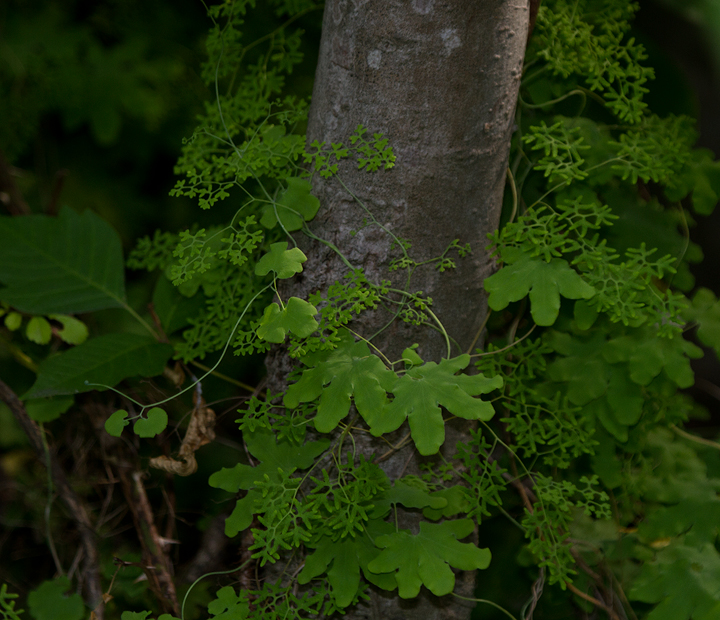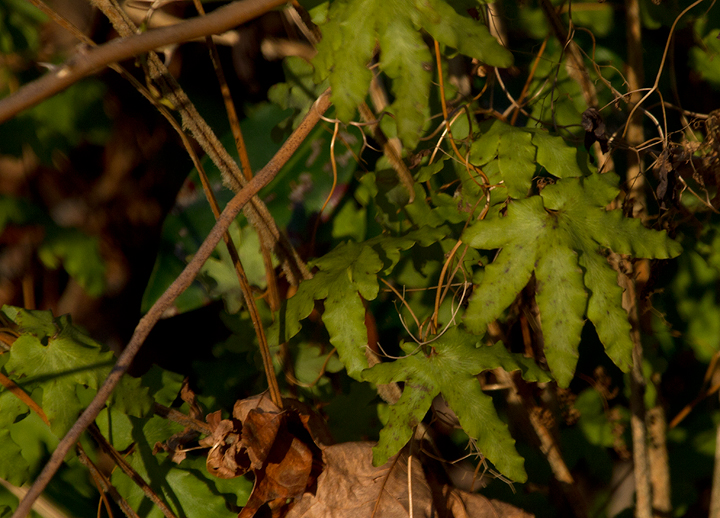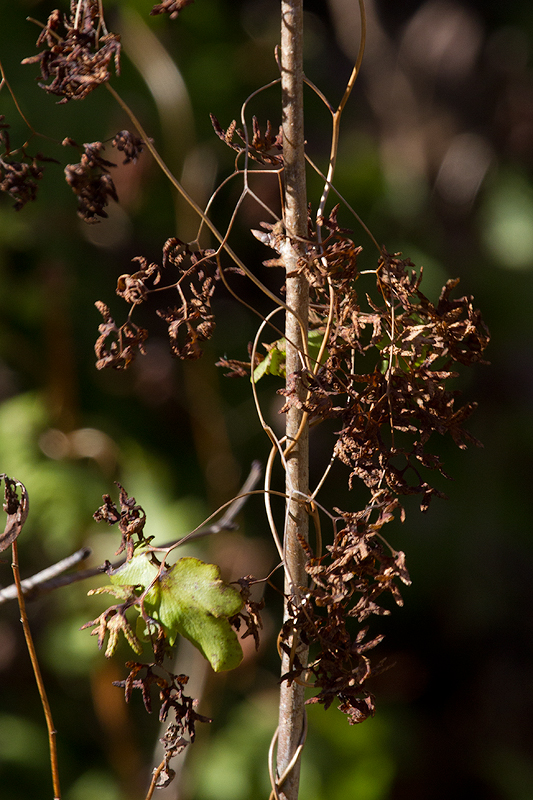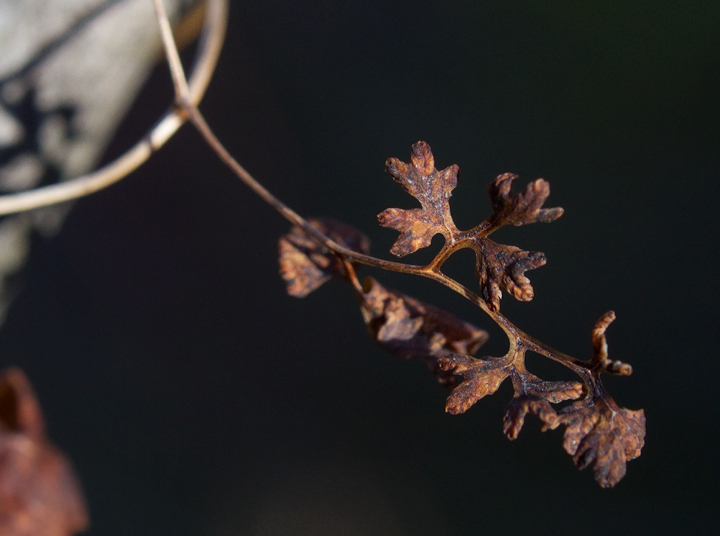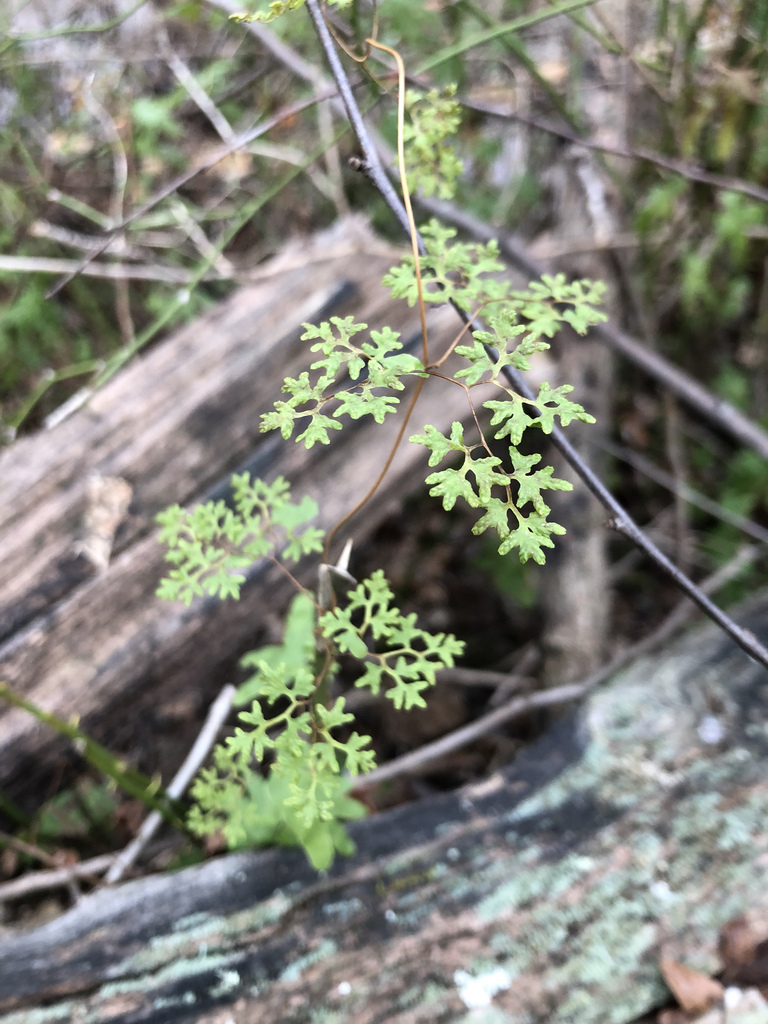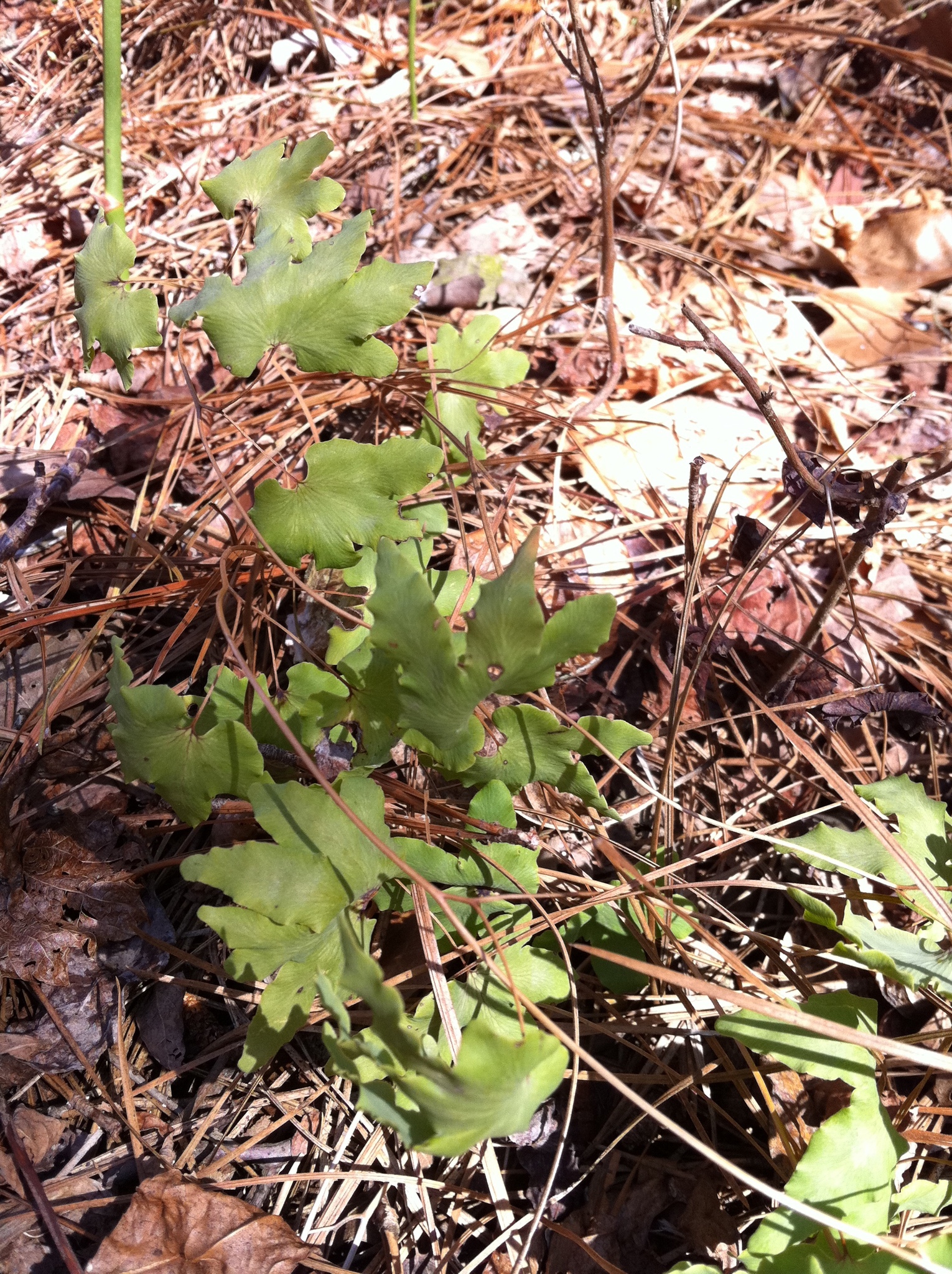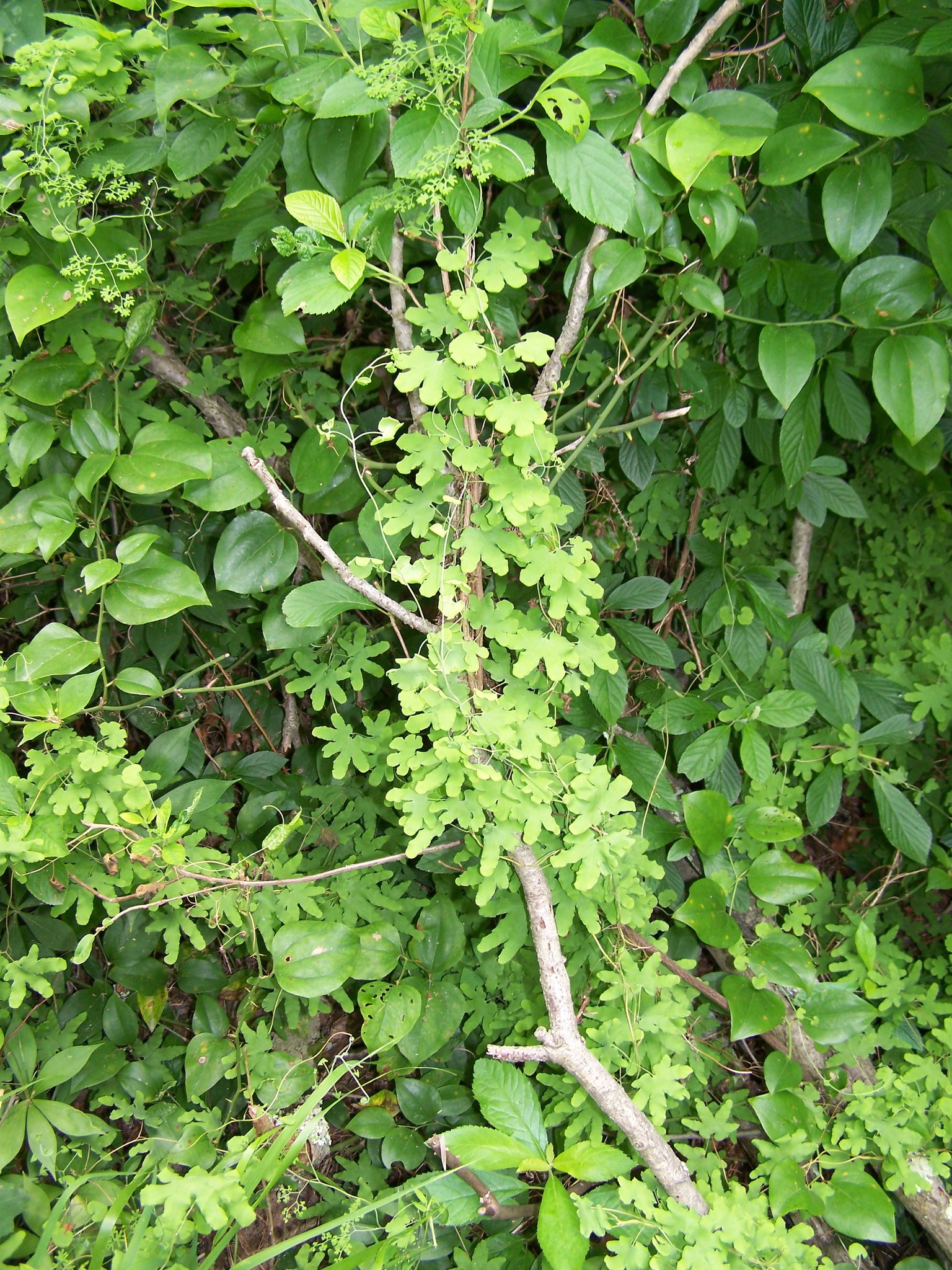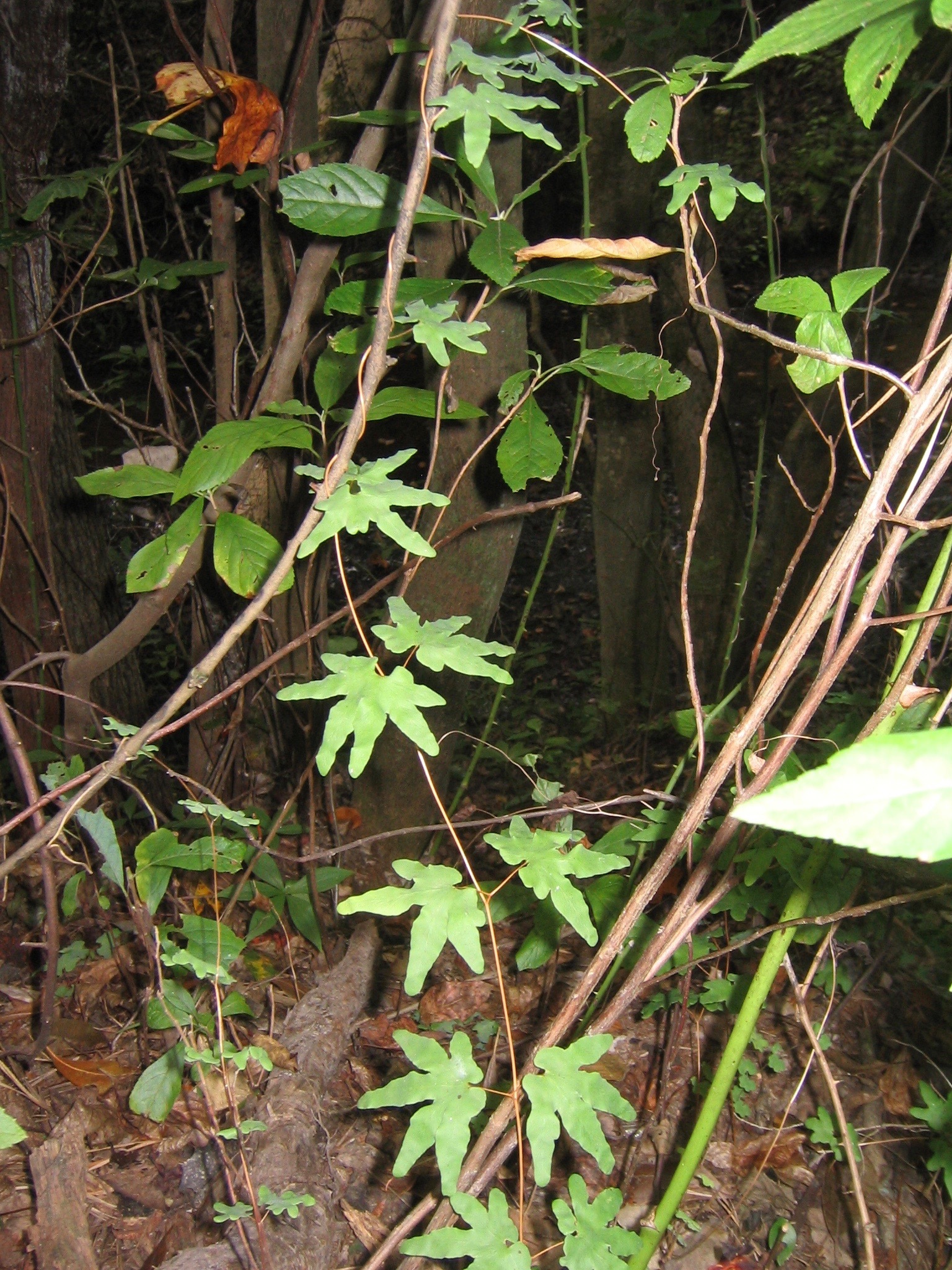Map Snapshot
















119 Records
Status
The only member of its mostly tropical genus native to North America. It behaves more like a vine than a fern, climbing by twining around trees and other plants. It is rare throughout much of its range from New England to the Southeast. In Maryland, it is state rare (S2) and listed as threatened. Also known as Hartford Fern, a Connecticut law written to prevent over-collection might have been our first plant protection law.
Seasonality Snapshot
Source: Wikipedia
| American climbing fern | |
|---|---|

| |
| Scientific classification | |
| Kingdom: | Plantae |
| Clade: | Tracheophytes |
| Division: | Polypodiophyta |
| Class: | Polypodiopsida |
| Order: | Schizaeales |
| Family: | Lygodiaceae |
| Genus: | Lygodium |
| Species: | L. palmatum
|
| Binomial name | |
| Lygodium palmatum | |
Lygodium palmatum is the only species of its genus native to North America. Unlike most species in the genus, this one, called the American climbing fern,[2] Hartford fern (after Hartford, Connecticut), or Alice's fern, is extremely hardy in temperate zones (other species tolerant of temperate climates include New Zealand's Lygodium articulatum and the Japanese Lygodium japonicum, which is now highly invasive in Florida).The name "Hartford Fern" being derived from its former prevalence in Hartford and the surrounding Connecticut area. It was extensively used as a Christmas decoration by early settlers, leading to the first law protecting a plant species in the United States in 1869.[3]
This fern is on endangered or threatened species lists in several states. It requires constant moisture, high light levels, and intensely acid soil to thrive. Where these conditions are present, it grows in abundance. This leads to a pattern of abundant, but rare and localized populations throughout its range. Its range is essentially Appalachian, ranging from New England down through the Appalachians, Piedmont and Appalachian plateaus into the American south.
Like other rare Lygodium species (such as Lygodium articulatum), their spores have a relatively meager viability, with even immediately sown spores having less than a 50% germination rate, and spores sown after 6 months of storage having less than 5%.[4]
Taxonomy
[edit]Lygodium palmatum is generally accepted to be part of a clade of basally divergent members of the Lygodium genus.[5][4]Some modern systematists have placed it as the sole member of a basally divergent subgenus Palmata,[6] while others have placed it in a clade with Lygodium articulatum. [5]The divergence of these results is likely due to the differential out group selection of the two studies. This divergence is evidenced both by molecular phylogenetics, and by various morphological discrepancies between Lygodium palmatum and the remainder of the genus.[4] Most notably, their spores are substantially smoother than any other species in the genus, and they possess dichotomously branched pinnae, and high levels of frond dimorphism. [4]
Interestingly, even within the limited present range of the species, there are regional differences that some argue may constitute subspecies. Of particular note is the divergence in the character of hairs on the abaxial surface of pinnae - they are largely glabrous in specimens found Northeast of Maryland, and are pubescent in those Southwest of Maryland, and in isolated populations found in Ohio and Michigan.[4]
Lygodium palmatum has a basal chromosome count of n=30, as is common among the genus, with the other common ploidy levels being n=28 and 29.
References
[edit]- ^ "NatureServe Explorer 2.0 - Lygodium palmatum Climbing Fern". explorer.natureserve.org. Retrieved 9 October 2020.
- ^ NRCS. "Lygodium palmatum". PLANTS Database. United States Department of Agriculture (USDA). Retrieved 25 June 2015.
- ^ "Lygodium palmatum (American Climbing Fern, Climbing Fern, Creeping Fern, Hartford Fern) | North Carolina Extension Gardener Plant Toolbox". plants.ces.ncsu.edu. Retrieved 2023-12-26.
- ^ a b c d e Garrison Hanks, Judith (1998). A mongprahic study of Lygodium Swartz. University of Michigan.
- ^ a b Madeira, Paul T.; Pemberton, Robert W.; Center, Ted D. (2008-06-01). "A molecular phylogeny of the genus Lygodium (Schizaeaceae) with special reference to the biological control and host range testing of Lygodium microphyllum". Biological Control. 45 (3): 308–318. Bibcode:2008BiolC..45..308M. doi:10.1016/j.biocontrol.2008.02.004. ISSN 1049-9644.
- ^ Nitta, Joel H.; Schuettpelz, Eric; Ramírez-Barahona, Santiago; Iwasaki, Wataru (2022-08-24). "An open and continuously updated fern tree of life". Frontiers in Plant Science. 13: 909768. doi:10.3389/fpls.2022.909768. ISSN 1664-462X. PMC 9449725. PMID 36092417.
- Lellinger, David B. A Field Manual of the Ferns & Fern Allies of the United States & Canada. Smithsonian Institution, Washington, DC. 1985.
External links
[edit]- . New International Encyclopedia. 1905.
